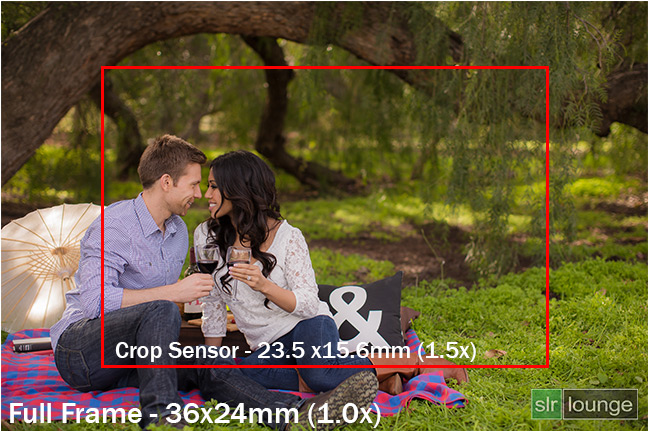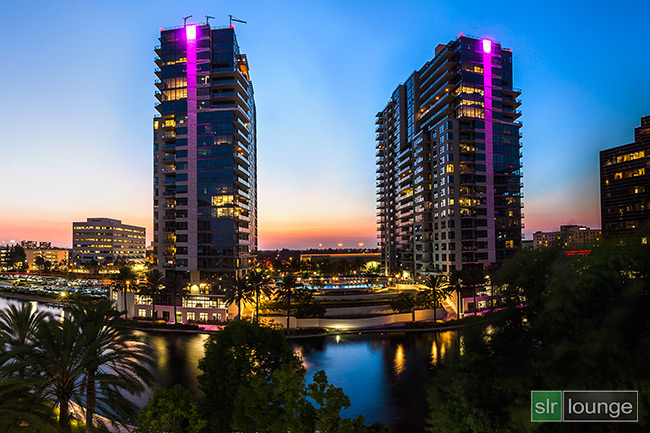What is an image sensor?
An image sensor is a solid-state device, the part of the camera's hardware that captures light and converts what you see through a viewfinder or LCD monitor into an image. Think of the sensor as the electronic equivalent of film.While talking about image sensor there comes to its size.
When it comes to sensor sizes, the two terms most used to classify them are “full frame” and “crop sensor”. An image sensor is a solid-state device, the part of the camera's hardware that captures light and converts what you see through a viewfinder or LCD monitor into an image. Think of the sensor as the electronic equivalent of film.While talking about image sensor there comes to its size.
The term “full frame” refers to a sensor size that has the same dimensions as the 35mm film format. Why is 35mm format considered to be the standard or a “full frame”?Well, the 35mm film format has been the standard in film gauge since 1909 due to its balance in cost and image quality and has stuck ever since. So which sensor type is the best fit for your photography? Let’s find out.
DIFFERENCE BETWEEN FULL FRAME AND CROP SENSOR
A crop sensor refers to any sensor smaller than a full frame sensor or a 35mm film frame. The common types of crop sensor include APS-C and micro 4/3 systems. Aside from the difference in physical size of the sensor, there are several other differences between a crop sensor and a full frame sensor.
Full Frame vs. Crop Sensor Field of View and Focal Length
The most visible difference between full frame and crop sensor is their field of view. In fact the term “crop” implies just exactly that. The smaller sensor’s field of view is a crop of the full frame. This means that if a full frame DSLR like a [simpleazon-link asin=”B0076AYNXM” locale=”us”]Nikon D800[/simpleazon-link] and a crop-sensor DSLR like a [simpleazon-link asin=”B00BI9X7UC” locale=”us”]Nikon D7100[/simpleazon-link] take the same photo from the same distance, with the same lens and point of view, the D7100 will capture a tighter field of view than the D800.

Focal length measurements on lenses are based on the 35mm standard. If you are using a crop frame camera the sensor is cropping out the edges of the frame, which is effectively increasing the focal length. The amount of difference in the field of view or focal length with a crop sensor is measured by its “Multiplier.”
For example, a Nikon APS-C crop sensor has a 1.5x multiplier. When a Nikon 50mm f/1.4 lens is attached to that Nikon DSLR, the focal length is multiplied by 1.5x and effectively acts like a 75mm lens on a full frame DSLR.
ADVANTAGES AND DISADVANTAGES OF FULL FRAME AND CROP SENSORS
There are several advantages and disadvantages to each sensor size. We are going to avoid the technical details and just give you the most practical and general information.
Full Frame Advantages – Generally, a full frame sensor can provide a broader dynamic range and better low light/high ISO performance yielding a higher quality image than a crop sensor. Full frame sensors are also preferred when it comes to architectural photography due to having a wider angle which is useful with tilt/shift lenses.

Finally, a full frame DSLR will have a shallower depth of field than a crop sensor DSLR, which can be a beneficial aesthetic. When shooting at the same EFFECTIVE focal length, using the same aperture settings and shooting from the exact same angle/distance to the subject, the full frame camera will have a shallower depth of field (more bokeh) than the crop sensor camera.
This is because the larger the sensor, the longer the focal length of the lens needs to be to capture the same field of view. For example, on a Canon 5D Mark III using a Canon 50mm f/1.4 lens gives the equivalent focal length or field of view as using a 31mm lens on a Canon 7D since it has a 1.6 crop multiplier (31mm x 1.6 = 50mm). Now a 31mm lens doesn’t exist of course, but you get the idea. The larger the sensor, the longer the focal length required to create the same field of view, hence a shallower depth of field is created due to the additional focal length.
Crop Sensor Advantages – On the other side, while a crop sensor DSLR doesn’t provide the same level of image quality as a full frame DSLR, it does offers major advantages when it comes to cost. It can also be very effective for telephoto photography for the extra reach gained from the crop sensor multiplier. For example, this can be very useful when shooting sports, wildlife, and other types of photojournalism. Just imagine that on a Canon crop frame body such as a Canon 7D; your Canon 70-200mm f/2.8 lens is effectively a 112-320mm lens!
Let me also clarify that this is simply a benefit, it doesn’t mean that you SHOULD use a crop sensor DSLR when shooting these types of photography. This is going to depend on your intended use, budget, and so forth. For those on a budget (which I think is most of us), the additional focal length and low cost of the DSLR are great advantages. But, for a professional, you will still get the best overall quality by having a full frame DSLR paired with a longer telephoto lens.
This is why you commonly see professional sports photographers using cameras like the [simpleazon-link asin=”B005Y3T1AI” locale=”us”]Canon 1D X[/simpleazon-link] or [simpleazon-link asin=”B006U49XM6″ locale=”us”]Nikon D4[/simpleazon-link] paired with a 300mm ([simpleazon-link asin=”B0000ALKBU” locale=”us”]Canon[/simpleazon-link] | [simpleazon-link asin=”B0030BEVEW” locale=”us”]Nikon[/simpleazon-link]) or 400mm ([simpleazon-link asin=”B0040X4PTK” locale=”us”]Canon[/simpleazon-link] | [simpleazon-link asin=”B000VDF5JC” locale=”us”]Nikon[/simpleazon-link]) low light lens. However, this is a costly setup as your lens and body are going to cost upwards of $15,000 – $20,000.
However, for the enthusiast or non-professional sports photographer, it is much more reasonable to pay $3,000 – $5,000 for a setup with similar quality using a crop sensor DSLR and a standard 70-200mm 2.8 Lens ([simpleazon-link asin=”B0033PRWSW” locale=”us”]Canon[/simpleazon-link] | [simpleazon-link asin=”B002JCSV8U” locale=”us”]Nikon[/simpleazon-link]). Not only is it more affordable, but it is also much more compact and portable as well.


Finally, as we mentioned a crop sensor DSLR is not as expensive as full frame DSLR. This is because manufacturing a full frame sensor is far more expensive and can cost over 20x that of a crop frame sensor. High-end crop sensor DSLRs can provide quality similar to that of full-frame DSLRs at a fraction of the price.
CONCLUSION
So in conclusion, a full frame sensor DSLR and a crop sensor DSLR have their own advantages and disadvantages. While a full frame DSLR provides a bit better overall quality, both have their uses. The important factor is the type of photography that you shoot and the budget that you have for your photography.
Source: http://www.slrlounge.com